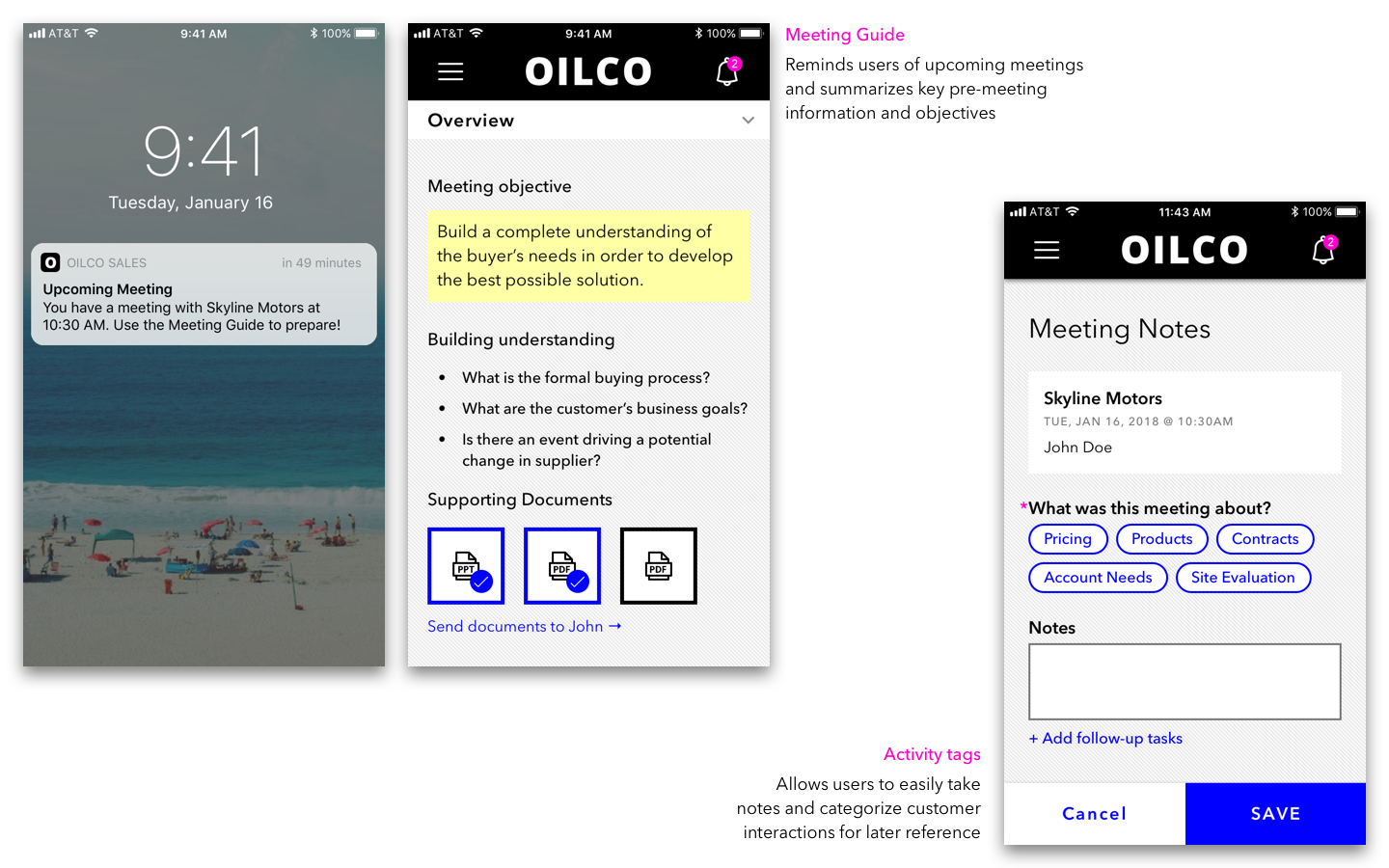An oil & gas supermajor sought to modernize the sales/CRM system being used by their lubricants business, which suffered from poor system adoption and visibility into sales outcomes. We conducted a user-centered discovery phase to better understand pain points and opportunity areas for the subsequent implementation.
How might we make technology work for the user rather than the other way around?
My role
Over the span of 12 weeks, I worked as a User Experience Strategist in tandem with an Associate Creative Director to conduct user research activities and compile a findings and recommendations report, then worked with a Senior UX Designer to create personas, journey maps, and conceptual wireframes to set the design direction for a CRM implementation. I stopped working on the project before commencing detailed UX/visual design for the actual implementation.
A deep dive into our users
One of our major challenges was understanding an extremely diverse global user base with variations by industry, role, and region. In order to discover these variations as well as common pain points, we planned and executed a comprehensive series of user interviews and field observations in English/Mandarin with 46 users across 20 countries. We also ran a variety of different exercises such as 5 E’s and co-creation sessions to start coming up with ways to improve the user journey.
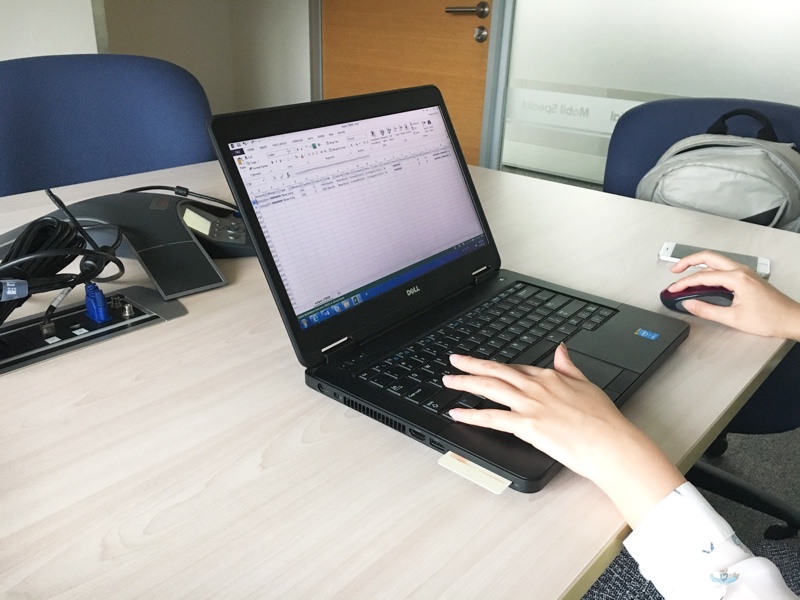
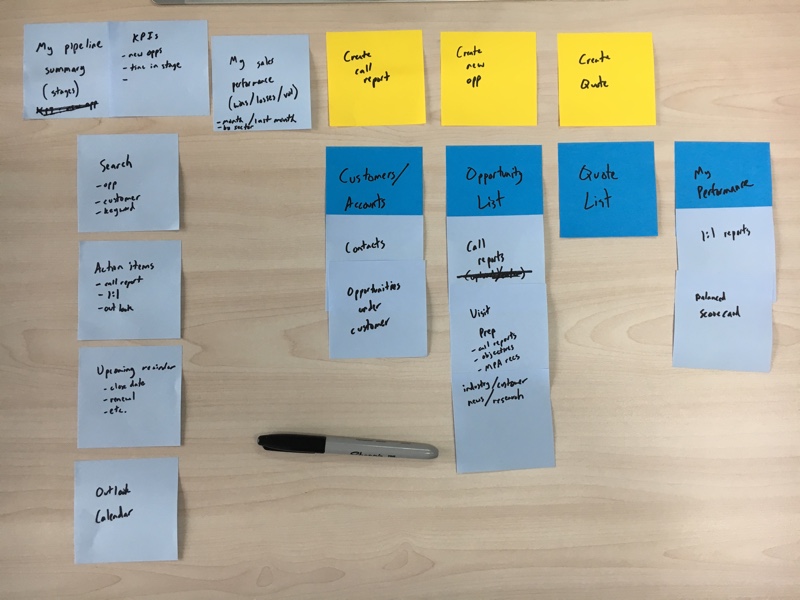
Keeping everyone on the same page
Faced with the challenge of conducting research across the world in a limited timeframe, our research team had to divide and conquer our interviews so that we were able to maintain coverage of time zones. At the same time, we needed a way to make sure our team was on the same page and a way to keep remote stakeholders feeling involved and invested in the discovery process. I proposed a series of regular updates I called Hot Takes, a collection of quick headline-esque bullet points that would help our busy stakeholders keep up to date with our research without having to dig through mountains of raw notes and recordings.
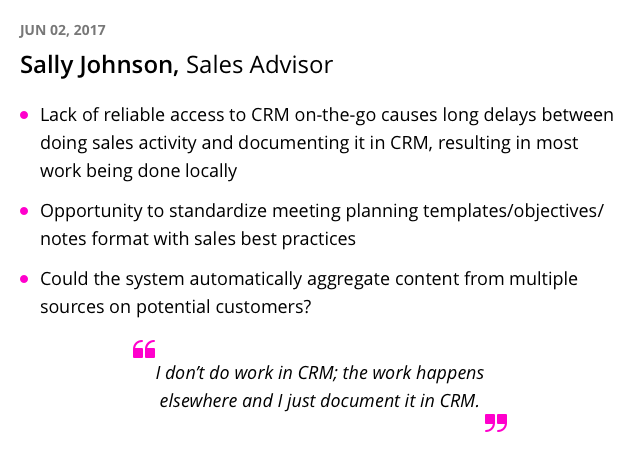
Hot Takes were well-received by the client and helped build their trust in the team through transparency. The greatest benefit we obtained from the increased stakeholder engagement was the ability to use their business knowledge to point out additional areas to explore in future interviews that may not have been obvious to the research team.
A note on the usage of Hot Takes
While the Hot Takes were a net positive, they grew bloated and time-consuming over the course of our research. As Pascal once said, “I would have written a shorter letter, but I did not have the time,” and synthesizing hours of research into a couple pithy bullet points without just repeating surface-level insights turned into a time-consuming activity, which was exactly what I had hoped to avoid. I remain convinced of the usefulness of frequent research sharing, but would reduce the frequency and keep strict discipline on
Insights
Through our research, some clear themes emerged around the lack of mobile/offline functionality, fragmented customer information, and manual workarounds due to system limitations. We translated these research insights into opportunities to prioritize and fill out a product roadmap.
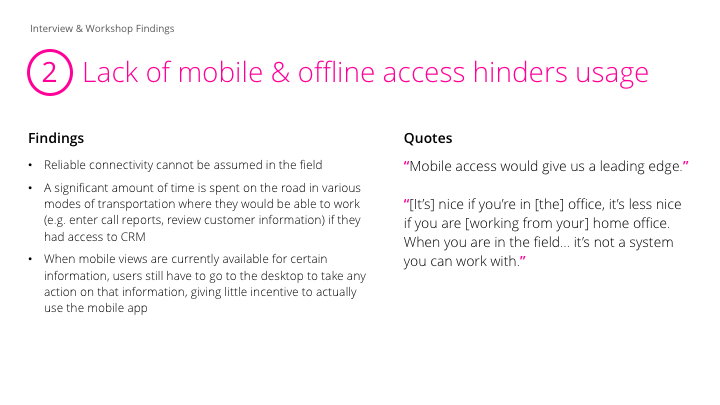
Personas
Through our research findings we also grouped our user base into various personas with distinct tasks and motivations to consider when designing not just the CRM system, but also future tools and processes. sales reps, reporting/operational support, sales managers, engineers
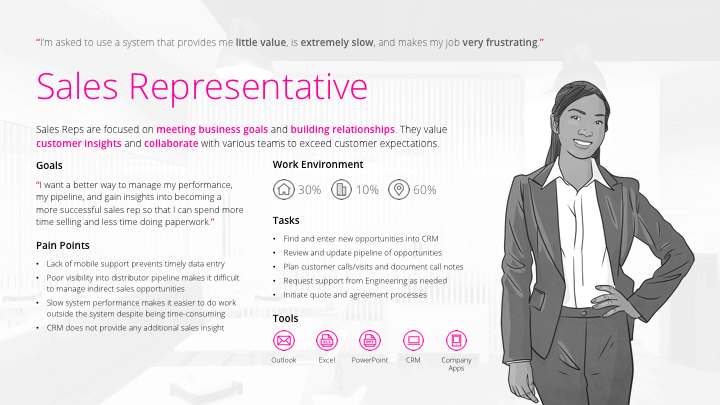
Creating a vision for the future
Additionally, we created high-level user journeys and wireframes showing potential opportunities to set the direction and focus of the subsequent system implementation phase.
Looking back on the process
finding a better way to document and synthesize while collecting research, setting clear expectations up front


